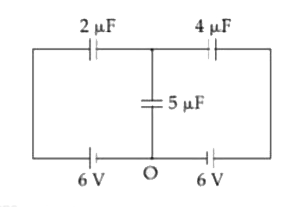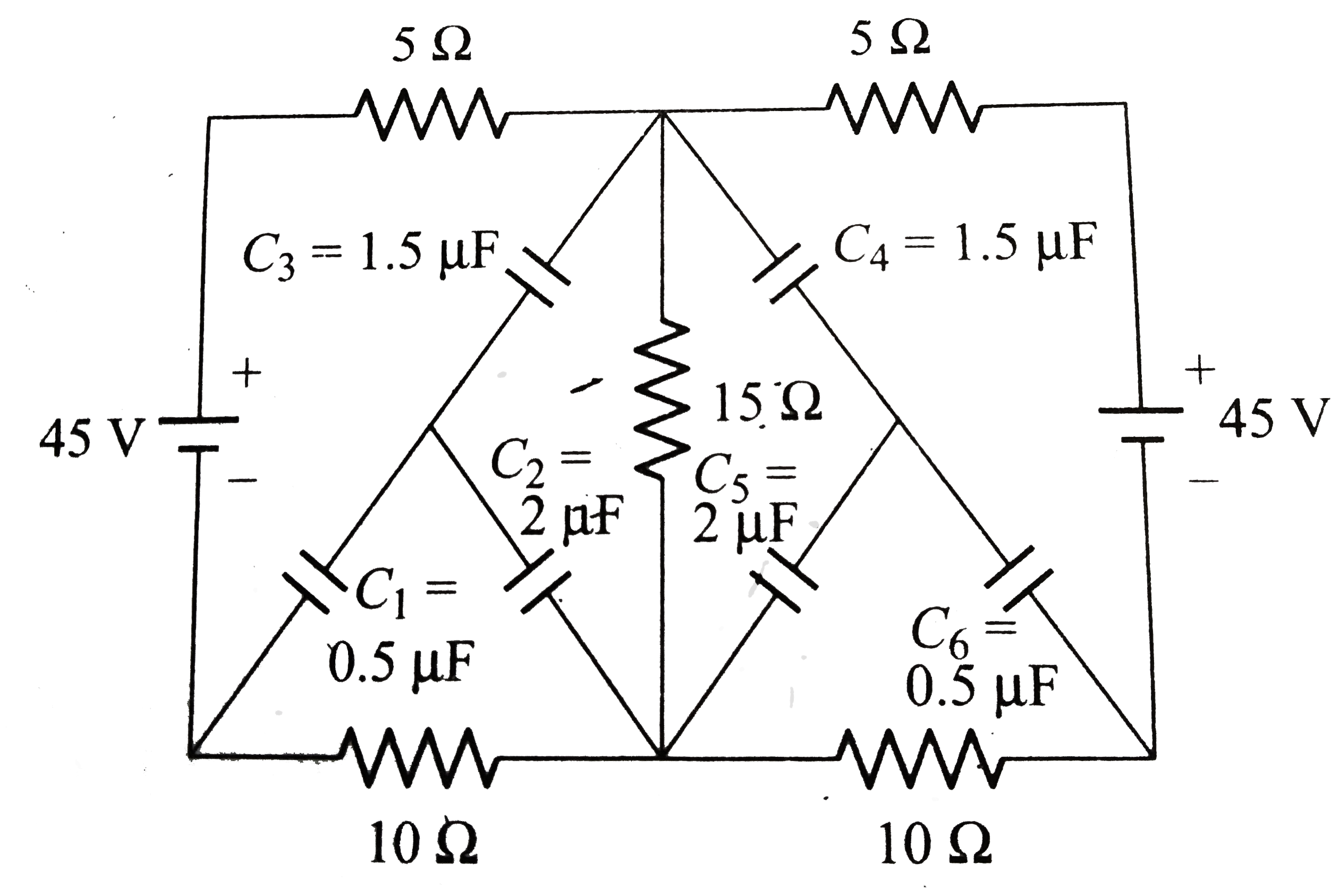The conduction current in ideal case through a circuit is zero when charge on capacitor is
zero
maximum
any transient value
depends on capacitor used
The correct Answer is:B
To solve the question "The conduction current in ideal case through a circuit is zero when charge on capacitor is...", we need to analyze the behavior of a capacitor in a circuit.
1. Understanding the Capacitor: A capacitor is a device that stores electrical energy in an electric field. It consists of two conductive plates separated by an insulating material (dielectric). When connected to a battery, charge accumulates on the plates.
2. Current in the Circuit: The conduction current (I) in the circuit is defined as the rate of flow of charge (dq/dt). This means that current is present when there is a movement of charge.
3. Charging Phase: When a capacitor is initially connected to a battery, it starts charging. During this phase, charge flows from the battery to the capacitor, and thus there is a conduction current in the circuit.
4. Fully Charged Capacitor: As the capacitor charges, the voltage across its plates increases. The charging continues until the voltage across the capacitor equals the voltage of the battery. At this point, the capacitor is fully charged.
5. Current at Full Charge: When the capacitor reaches its maximum charge, it no longer draws any current from the battery. This is because the potential difference across the capacitor plates matches the potential difference of the battery, resulting in no net movement of charge.
6. Conclusion: Therefore, when the capacitor is fully charged, the conduction current in the circuit becomes zero. This means that the conduction current is zero when the charge on the capacitor is at its maximum.
Final Answer:
The conduction current in an ideal case through a circuit is zero when the charge on the capacitor is at its maximum.
---
The conduction current in an ideal case through a circuit is zero when the charge on the capacitor is at its maximum.
Topper's Solved these Questions
- ELECTROMAGNETIC WAVESBOOK - DC PANDEY ENGLISHCHAPTER - ELECTROMAGNETIC WAVESEXERCISE - Check point 8.2
15 Videos
- ELECTROMAGNETIC WAVESBOOK - DC PANDEY ENGLISHCHAPTER - ELECTROMAGNETIC WAVESEXERCISE - Sec A
51 Videos
- ELECTROMAGNETIC WAVESBOOK - DC PANDEY ENGLISHCHAPTER - ELECTROMAGNETIC WAVESEXERCISE - Examples
14 Videos
- ELECTROMAGNETIC INDUCTIONBOOK - DC PANDEY ENGLISHCHAPTER - ELECTROMAGNETIC INDUCTIONEXERCISE - Medical entrances gallery
25 Videos
- ELECTROSTATIC POTENTIAL AND CAPACITORSBOOK - DC PANDEY ENGLISHCHAPTER - ELECTROSTATIC POTENTIAL AND CAPACITORSEXERCISE - (C) Chapter exercises
50 Videos
Similar Questions
In the circuit shown , charge on the 5μF capacitor is :

View SolutionIn the circuit shown below, the charge on the 60μF capacitor is

View SolutionIn the given circuit, the charge on 4μF capacitor will be :

View SolutionIn the given circuit, the charge on 4μF capacitor will be :
 .
.
View SolutionA series RLC circuit is connected to an ac generator. The instant at which current in the circuit is zero, the energy stored in the capacitor and inductor are:
View SolutionIf the capacitor shown in the circuit is charged to 5V and left in the circuit, in 12s the charge on the capacitor will become:

View SolutionThe circuit is in a steady state.

The charge in capacitor C1 is
View SolutionThe circuit is in a steady state.

The charge in capacitor C2 is
View SolutionThe circuit is in a steady state.

The charge in capacitor C3 is
View SolutionDisplacement current is maximum during charging of capacitor. When charge on the capacitor is
View Solution
